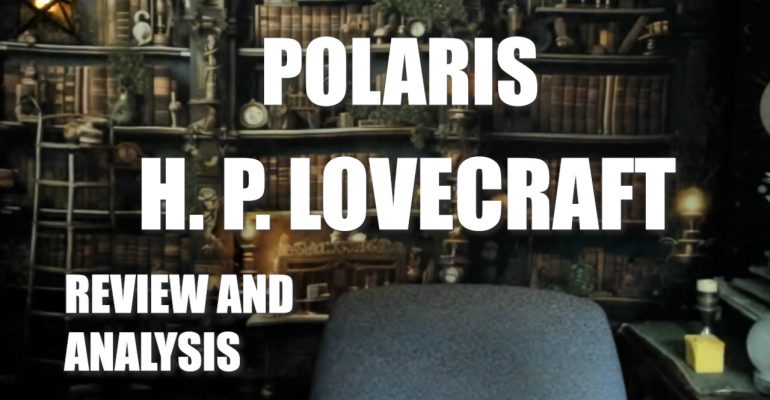It’s story ten in the Lovecraft world! I enjoy the story immensely. The racist aspects of it? Those are of course completely unnecessary. Let’s take a look.
The main character is living a hum-drum life in a cottage at the edge of a swamp. There’s a cemetery nearby. He can’t sleep at night, and mostly he stares out his window at the star Polaris. The star seems to be an evil presence.
Finally, the character falls asleep and dreams.
In this dream-world he’s in a ‘ghastly’ marble city which of course has domes. It’s interesting that Lovecraft, who adores cities of onyx and gold and silver, with ivory thrones, thinks marble is ‘ghastly’. No marble for him.
When he wakes up, he misses the city. Over the coming nights, he keeps dreaming of the city and it seems more and more real to him. It is sometimes eternally day, sometimes eternally night, so somewhere in the Arctic. When he wakes, he is bored with his swamp-house and its cemetery-view. The marble city is where he wants to be.
And then one night he actually starts interacting with the marble-city people. He realizes one is his friend Alos. Their fine city is under attack! There are evil squat yellow-people from the West attacking! The strong manly grey-eyed white-skinned men must resist!
But our poor main character is weakly and frail. He can’t fight.
Note that in real life Lovecraft WANTED to join up for World War I. His mother actively prevented him from going. Not only that, but his mother went around telling all her friends and family that Lovecraft was too feeble to be a soldier. Now, I’m not saying Lovecraft would have made it through basic training. But Lovecraft thought of himself as an able-bodied prime example of manhood. He was born in 1890. World War I was from 1914-1918. So Lovecraft was 24 – 28 during the years of World War I. For those years, as a man in his mid-twenties, Lovecraft had to read newspapers and talk to people about all the challenges of World War I, all the time with people wondering why he wasn’t doing his part. And with his mother going around telling everyone who would listen that her darling son couldn’t possibly go to war because he was too weak and frail.
So, clearly, this impacted Polaris which was written in 1918 and published in 1920.
In any case, the dream-character is sent for an important mission – to man the watchtower. This brings up a strong Lord of the Rings vision for me, of the fire-based watchtowers which need to be lit to summon help. Our character actually has something vitally important to do.
But Polaris the Evil Star has other plans. Polaris lures our character into falling asleep. Not only that, but Polaris tells him he won’t awaken for 26,000 years, which is when Polaris cycles back around into the same position. Maybe that’s the time when Polaris is at its strongest and able to impact humanity.
So here we are, in modern times, and our character realizes that 26,000 years ago there was a wonderful civilization in the arctic and HE let it get destroyed so thoroughly that nobody in modern times even knows it existed. All trace of it – all legend of it – is completely wiped out. Only the evil Eskimo remain, the descendants of the invaders.
It’s not that our character is an immortal being who has forgotten about this all this time. It’s more that his soul has been in stasis and is now awakened in a fresh body so that he can be agonized by his lack of will-power all that time ago.
I find the boring-reality-to-exciting-dream flip to be quite interesting. I actually wrote a story just like this myself, before I knew anything about Polaris. In my story we start in a quiet life of an antique shop owner. She dreams about a more exciting life of being a cop in Boston. It turns out she really IS a cop in Boston and her dreams are about having a quiet life instead. So I really like that Lovecraft also approached it in this way and how he handled it.
I also love the idea of the old civilization so thoroughly destroyed that we don’t even have a hint that it was there. What if there really was a space alien civilization outpost on Earth maybe 26,000 years ago and it was wholly destroyed? How would we even know it had been there? What would we look for? Or, similarly, what if we develop space travel and visit a ‘dead’ planet? How would we know that there once was a civilization there long ago, but all their structures had long since been destroyed?
So there’s lots here for me to enjoy. And I wish there wasn’t the ‘yellow menace’ aspect to it.
Here’s the original story:
https://www.hplovecraft.com/writings/texts/fiction/p.aspx
My video review of Polaris –


